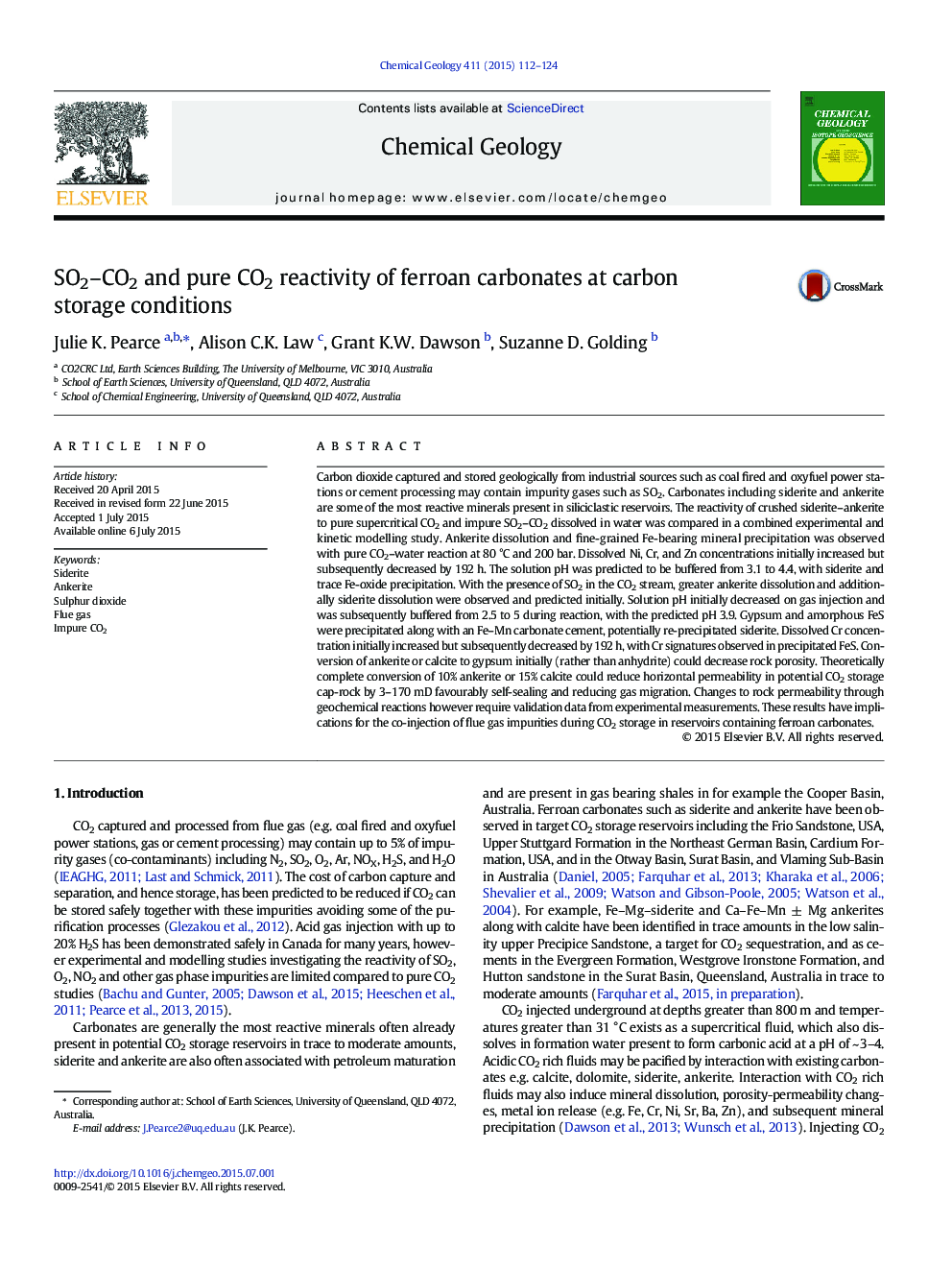| Article ID | Journal | Published Year | Pages | File Type |
|---|---|---|---|---|
| 6436321 | Chemical Geology | 2015 | 13 Pages |
â¢SO2-CO2-water-rock experiments and geochemical modelling at CO2 storage conditions.â¢Siderite-ankerite has higher reactivity with SO2-CO2-water than pure CO2-water.â¢Solution pH buffered by carbonate dissolution to similar values with and without SO2.â¢Ankerite conversion to gypsum in the presence of SO2 was observed and predicted.â¢Ankerite conversion to gypsum could decrease rock porosity and permeability.
Carbon dioxide captured and stored geologically from industrial sources such as coal fired and oxyfuel power stations or cement processing may contain impurity gases such as SO2. Carbonates including siderite and ankerite are some of the most reactive minerals present in siliciclastic reservoirs. The reactivity of crushed siderite-ankerite to pure supercritical CO2 and impure SO2-CO2 dissolved in water was compared in a combined experimental and kinetic modelling study. Ankerite dissolution and fine-grained Fe-bearing mineral precipitation was observed with pure CO2-water reaction at 80 °C and 200 bar. Dissolved Ni, Cr, and Zn concentrations initially increased but subsequently decreased by 192 h. The solution pH was predicted to be buffered from 3.1 to 4.4, with siderite and trace Fe-oxide precipitation. With the presence of SO2 in the CO2 stream, greater ankerite dissolution and additionally siderite dissolution were observed and predicted initially. Solution pH initially decreased on gas injection and was subsequently buffered from 2.5 to 5 during reaction, with the predicted pH 3.9. Gypsum and amorphous FeS were precipitated along with an Fe-Mn carbonate cement, potentially re-precipitated siderite. Dissolved Cr concentration initially increased but subsequently decreased by 192 h, with Cr signatures observed in precipitated FeS. Conversion of ankerite or calcite to gypsum initially (rather than anhydrite) could decrease rock porosity. Theoretically complete conversion of 10% ankerite or 15% calcite could reduce horizontal permeability in potential CO2 storage cap-rock by 3-170 mD favourably self-sealing and reducing gas migration. Changes to rock permeability through geochemical reactions however require validation data from experimental measurements. These results have implications for the co-injection of flue gas impurities during CO2 storage in reservoirs containing ferroan carbonates.
Graphical abstractDownload high-res image (123KB)Download full-size image
